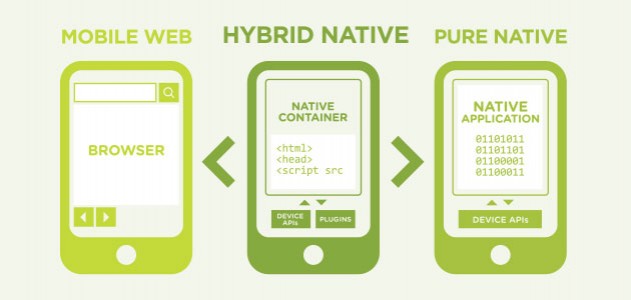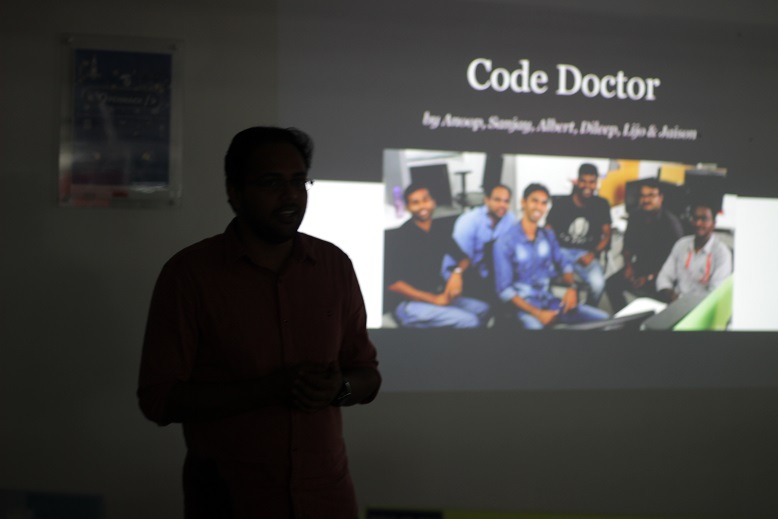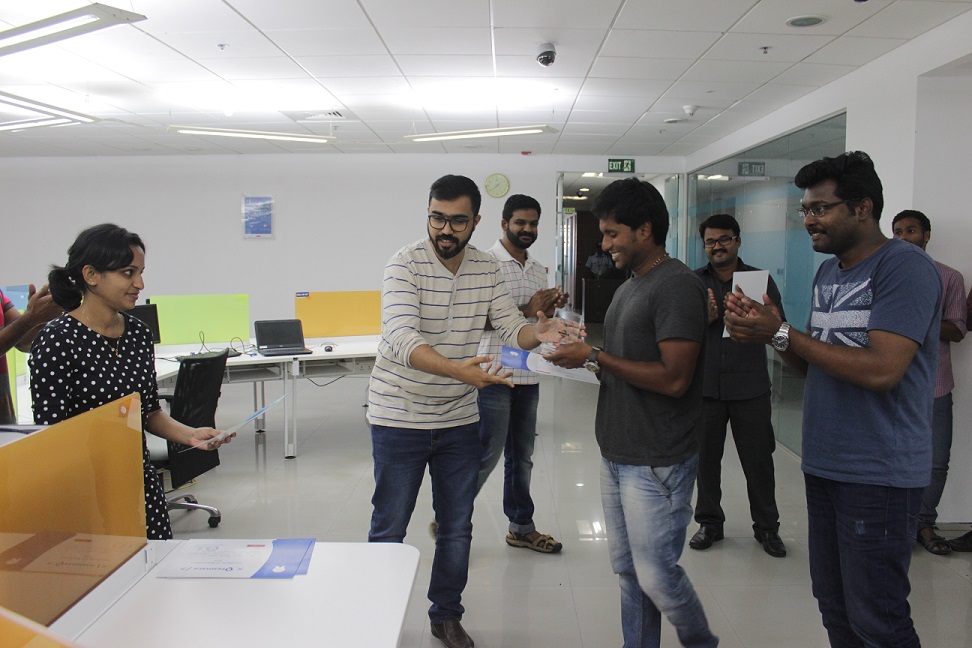Category: Business
Mobility is in a boom phase now, with more number of people accessing the internet using mobile devices as opposed to desktops and laptops. While rolling out responsive websites, where the design of the website gel with the screen size of the app has been a time-tested way to cater to mobile users, of late more and more businesses are forsaking their website and launching mobile apps instead.
Mobile Apps are Always Available
Unlike a website that must be accessed through a browser every time and requires an internet connection to load, a mobile app, once installed, remains in the device, and the user can access it anytime with just a click. The performance of the website depends on the strength of the internet connection, whereas an app may be accessed fast even without an internet connection. Many features and functionality of the apps are accessible offline, with the app updating itself in the background automatically whenever the user goes online. Mobile websites which use caching function to load websites without an internet connection offer very limited functions.
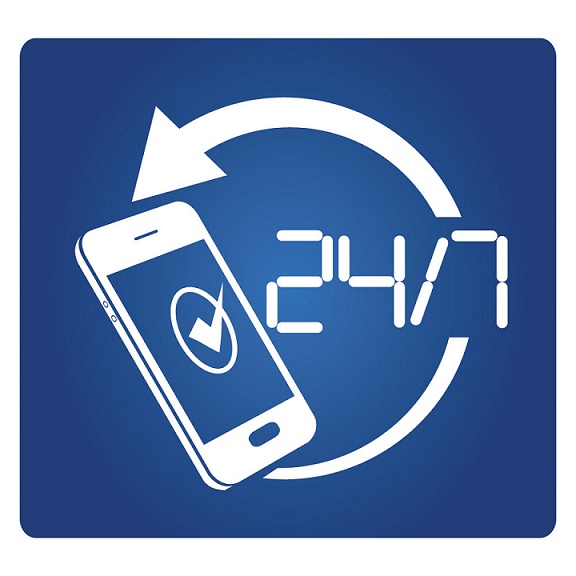
Also, since the mobile app is downloaded to the smartphone, users are more likely to open the app than taking the trouble of searching and entering a competitor’s web page. The presence of an app on the device has a strong influence on retaining the brand name and image on the user’s mind. Mobile app icons double up as ad-banners, and users are reminded of the brand associated with the app even when they do not use the app.
Apps are Technically Superior and Give a Better UX
Web designing has come a long way ever since the days of working with tables and flash, yet with all the technological advancements in web designing, mobile websites still are almost wholly dependent on browsers for even the most elementary functions. For instance, without the browser’s address bar, back button, refresh button, it is virtually impossible to open and navigate a web page.

Mobile Apps are free from such dependencies. Developers have a free hand designing apps with elaborate functions and co-opting advanced gestures such as swipe, drag, pinch, and more, which are far more powerful and enhance the user experience compared to the limited browser options.
Apps are inherently faster as well. Mobile websites depend on javascript code to perform most functions. The framework used by mobile apps run about 5X faster than javascript code!
Browsers have been adapted to the mobile space from desktops, and apps are integral to the mobile devices, and the difference in performance is obvious.
Mobile Apps Offer Scope for Deep Personalization
Users pampered with personalized content are more likely to convert, and apps are deeply personal compared to a website. Mobile apps have the capability to offer highly targeted content and utility, to specific users. Mobile websites, in contrast, reach out to a diverse set of audience and are more of a “one-size-fits-all” thing.

Personalization goes much beyond offering tailored communication to users based on interests, location, and usage behavior, though. Personalization also means making the user experience delightful, based on the profile and preferences of the user. Apps store the preferences and settings made by the user and apply the same automatically whenever the user opens the app. With a website, either the user must log in every time, or state their preferences afresh every time they access the website.
A mobile app also offers the freedom of experimenting with new branding style to users, quite distinctly from the branding style of the browser, which is virtually the same for everybody. While microsites work on a similar design personalization concept of apps, it has not yet caught on.
Apps Leverage the Smartphone’s Capabilities
Mobile devices have become popular not just because of its portability, but also because it packs in many intuitive features, such as camera, GPS, Bluetooth, gyroscope, contact list, accelerometer, compass, and other capabilities, many of which are not found in desktops and laptops or are cumbersome add-ons.

However, such functionality is useless unless there is a viable method to use it during the course of work or activity. Websites, no matter how optimized it is for the mobile, are either outright incapable of leveraging such functionality, or the integration is clumsy. Mobile apps, on the other hand, seamlessly integrate such features to offer added functionality and possibilities for users.
The effective and intuitive use of such features enhances the user experience, reducing the effort users would otherwise have to make. For instance, a banking app could easily allow the user to take a selfie, leveraging the smartphone’s camera, whereas a browser would require the user to painstakingly scan and upload an image. The swipe gesture allows users to browse pages faster compared to using the back or forward button of the browser.
Apps Facilitate Push and In-App Notifications
In today’s hyper-competitive world, marketers have no option but to reach out and engage with their prospects and customers on a proactive way.
The much used and abused email, the default way of online communication, has now lost its effectiveness, with users more likely to send promotional emails straight to the junk folder. Businesses now seek to counter the ever-dropping open rates and click rates through mobile app notifications.

Apps have the capability to generate both push notifications and in-app notifications, offering enterprises viable means to reach out to their users in a less intrusive manner. Users receive push notifications on their smartphones regardless of the activity they indulge in on their mobile devices. In-app notifications come when users open and engage their apps. Such notifications are instant and deliver high click-through rates.
Marketers looking to increase conversions find mobile apps a handy tool to acquire both top-of-the-funnel (ToFu) and bottom-of-the-funnel (BoFu) users and push users down the conversion funnel. For instance, many ToFU users are likely to download intuitive utility apps, and once they download, the marketer can leverage notifications to nurture them into BoFu leads. Likewise, many BoFU users are likely to download eCommerce apps, making them prime candidates for conversion.
Businesses with large wallets may continue with both mobile websites and app, catering to all customers. However, in today’s highly competitive environment with wafer thin margins, most companies would have to prioritize on what satiates their customers the best, and here apps take a clear lead over mobile websites. About 85% of customers prefer mobile apps over websites, about 55% of customers see apps as more convenient compared to mobile websites, 48% of them see apps as faster, and 40% of them find apps easier to browse.
The trick is to deliver highly intuitive and well-designed apps that add value to a user. This requires the expertise of specialists focused on the task and who have horned they skilled developing and implementing several cutting-edge mobility projects.
Stay up to date on what's new

Featured Blogs
Stay up to date on
what's new



Talk To Our Experts
Digital transformation has turned into a ubiquitous concept that businesses can no longer afford to look away. The world is going digital at a lightning speed, making it imperative for business establishments to upgrade their skills, processes and technological know-how to this changing model. The fact that digital transformation emerged as a top concern for CIO Agenda in 2017, according to Wall Street Journal report underlines the imminence of the situation.
Leveraging digital technologies to improve business operations and organizational setups is the focus of businesses right now. If you too are considering a digital transformation initiative for your business, here are five questions to consider for making desired progress in a prioritized and strategic way:
1. Why do you need digital transformation?
‘Just because everyone is doing it’ is not the best reason to undertake a digital transformation process. It is important for an organization to understand why, if at all, they need to go through it. The best approach here is to identify the end goals you want to achieve by going digital – whether it is improving product quality, customer experiences or internal processes – and then work backward. This is particularly important for businesses, where digital processes do not directly tune in with core KPIs. Having your end goals in sight right from the onset will help you determine the outcomes of your digital transformation initiative.
2. How will you substantiate the value of your digital transformation initiative?
Well, this is one of the basic questions that must govern almost every business decision you take but is especially crucial in the case of digital transformation. You must have a clear idea as to how you plan to measure the success of your digitization plan, and for that, knowing how the concept fits into your business strategy is of paramount importance. Once these parameters have been established, the process of monitoring and gauging value of other relevant indicators, not just during the process of digital transformation but also beyond, becomes simpler. This will also save you time, effort and money in layering on technology in areas that don’t really require it.
3. Are your key stakeholders on board?
Digital transformation isn’t a small project but an extensive overhaul that will impact every single department and person associated with your business. As with every other big project, unexpected difficulties may crop up along the way. The project may get delayed or the budget may overshoot. If all your stakeholders aren’t onboard or fully convinced about the need to go digital, they may decide to pull the plug on the project. Working on your buy-in is essential to make sure all leaders and stakeholders – business partners, financiers, and shareholders – fully understand the importance of such an initiative and are committed to taking it to its logical end.
4. Have you found the right people to execute your digital transformation?
Whether you are simply revamping a website, building a new one, working on automated marketing, digitizing customer experiences, or doing it all in one go, you need the right kind of experts to get the job done and done well. Which brings up another poignant question – whether you want to hire people to do this job for you or outsource? The answer to this depends entirely on the kind of digitization you have in mind and the resources available at your disposal. If you are an established business with a long-term digital map in mind, building a core team of digital professionals is better suited. On the other hand, if you are a startup with limited resources, outsourcing may be a more practical option. Whatever your choice, you need to focus on striking that intricate balance between experience, skill and in-demand roles. There are a lot of talented professionals in the marketplace, you just need to pick the ones whose wavelength resonates with your end goals and larger KPIs.
5. Are your employees prepared for the change?
When a business undergoes a digital transformation, a lot of operational aspects are bound to change. This may mean that your employees will need to upgrade their skills and learn new processes. You cannot expect them to throw their existing work habits right out of the window and embrace the change instantaneously. A digital transformation will kick-in in the true sense only when you evolve a strategy to inform, educate and help your employees cope with the change.
Just the way every business has its own distinct identity, each digital transformation initiative is unique too. Be that as it may, these five key questions can prove vital in helping you define and execute a digital transformation that works best for your organization.
Stay up to date on what's new

Featured Blogs
Stay up to date on
what's new



Talk To Our Experts
The UAE is all set to implement Value Added Taxation (VAT) from January 1, 2018. The expected rate of VAT is 5% on all goods, with exemptions for some basic goods and services such as healthcare, education, and essential food stuff.
Are you ready for VAT?
Get in touch with us now for a free consultation!
Our VAT experts in GCC regions can help you through key challenges that you will face while implementing VAT.
The push towards VAT is part of a common framework for VAT envisaged by the six-member Gulf Cooperation Council (GCC) member states, all of whom are expected to follow suit and implement VAT at any time before January 1, 2019. The underlying rationale is an attempt by these states to move away from over-dependence on oil revenues, and diversify their revenue sources.
The finer details of the VAT regime are yet to become explicit, as the legislation governing VAT rules is not yet released. Nevertheless, considering there are only a few months left for the roll-out, businesses would do well if they start preparing now to ensure a smooth rollover.

Businesses need to primarily assess how the introduction of VAT would impact their business. The immediate consideration should be on the following aspects:
- Coverage: Identify if the products and/or services sold by the business will attract VAT.
- Strategy: Brainstorm on how VAT will impact the overall business, especially pricing and competitiveness, and formulate effective strategies.
- Prepare Internal Systems: Identify how VAT will impact financial and other business systems, and assess the capability of the existing systems to co-opt VAT.
- Evaluate the Ecosystems: Identify contacts and inter-company transactions requiring VAT action, and reach out to them to ensure compliance. Adjust contracts to factor in VAT obligations.
- Timetable: Get the infrastructure and timetable ready for compliance. Conduct training and awareness sessions on VAT implementation, for the benefit of stakeholders.
1. Get Clarity on VAT Coverage in the UAE
The first task for a business is to identify whether the goods and or service they sell is taxable under VAT.

The list specific items which will attract tax is not yet released. Indications are that, about 100 essential food and grocery items, education, healthcare, and social services will be tax-exempt. However, most products and services, and just about all big-ticket items, including electronic and consumer goods, home appliances, cars, jewelry, watches, and other white goods will attract VAT in the UAE. Likewise, many services, including eating-out and entertainment, will also attract VAT. There is no clarity yet on whether some common items, such as air-tickets, will be taxable. Side-by-side, many GCC countries are also planning to introduce excise duties on “sin goods,” such as beverages with high sugar content, deemed harmful to health.
The second consideration for businesses is the threshold limit. Younis Al Khoury, Undersecretary of the UAE Ministry of Finance, announced companies with annual revenues of over Dh3.75 million will be obliged to be registered under the GCC VAT system. Companies whose revenues fall between Dh1.87 million and Dh3.75 million will have the option to register for VAT during the first phase of the VAT implementation, but eventually, all companies will have to register under the system, regardless of the reported revenues, during the second phase of VAT roll-out.
2. Set a Strategy Upfront
A crucial task before companies is to draw out strategies to tackle the potential disruption caused by VAT implementation.
Companies need to evaluate their strategy on multiple fronts.
VAT implementation is likely to have immediate effects on consumer behavior, considering the end customer is expected to bear the ultimate burden of VAT. Many manufacturers, especially white goods manufacturers, plan to absorb all or some of the 5% VAT, to prevent a price-hike, and ensure their products remain competitive in the market. Companies need to deploy tools that capture customer sentiments in real time and be ready with appropriate marketing tools to reach out to customers in real time, to take advantage of the changing sentiments. Real time marketing monitoring tools are a must.

Another critical consideration is the impact of VAT on internal operations. Companies need to align their business model to comply with the VAT requirements. The UAE Ministry of Finance expects businesses to make changes to their core operations, financial management practices, bookkeeping methods, technology stack, and human resource mix, to cope with the VAT ecosystem. Administrative and compliance requirements of VAT will incur cost and resource allocation. Likewise, the introduction of VAT may result in cost of living going up, forcing an upward adjustment of wages. Businesses need to budget for such costs and factor it into their product pricing and overall business strategy.
Businesses operating in other GCC countries would have to consider and co-opt the GST rules in all states they operate in, considering VAT is introduced as a GCC region-wide system. UAE businesses would need to evaluate the impact of the special rules on intra-GCC supplies and acquisitions and factor in the potential implications for their business models.
3. Tweak or Set-Up Internal Systems for Compliance

At a basic level, businesses need to ensure their billing and invoicing system is set up to calculate and add VAT to applicable products and services, automatically. Several items, especially day-to-day groceries will be exempt from VAT, and will be billed side-by-side with several VAT items. Businesses need to ensure their systems not only support VAT, but can identify and accommodate exempted items. Still better, the system needs to be flexible with the VAT rate, which is not set in stone, and can change in future. Businesses would also need to incorporate VAT into their accounting systems and financial systems, and generate reports as per the compliance requirements.
However, VAT is much more than a financial issue and will impact all departments of a business, including finance, marketing, human resources, information technology, procurement, and other departments. Businesses need to tweak their business processes, and set-up systems to accommodate VAT documentation. Possible areas of changes include process forms, templates, and other documentation. While the specifics on the format of reports, when to file returns and other compliance requirements are yet to be awaited, businesses need to get the basic infrastructure ready as soon as possible. Indications are most businesses would have to file VAT returns every three months.
Establishing a sound trial and documentation will be critical to claim possible VAT refund on input items, or VAT paid by the business on raw-materials, as per the rules. VAT is applied on goods and services at each stage of the supply chain. Unless there is sound documentation in the specified format and mode, it may be difficult to claim a refund for the VAT already paid earlier in the supply chain, forcing a heavy burden on the business.
The extent of resources required would depend on the complexity of the compliance process, which in turn is likely to depend on complexity and scale of the business operations. Many countries have simplified compliance norms for small businesses. While the nature of requirements in the UAE is yet to be spelled out, it is essential to get implementation right and integrate VAT as part of the everyday business process.
4. Make Proactive Reach-Outs Through the Ecosystem

It is not enough for a business operating in a VAT regime to set up their internal system. The VAT ecosystem is interconnected, and businesses need to consider their suppliers also, to determine the impact of VAT in the UAE. For instance, businesses engaging in exempt or partially exempt supplies would still need to evaluate the additional cost impact on their purchases made from businesses falling under the VAT regime. Similarly, all businesses need to ensure the invoices they receive are compatible with the new VAT regulations. Most importantly, businesses signing new trade deals or agreements need to factor in a clause which allows them to pass on the VAT rate to the buyers.
Pro-active remedial measures to address potential deficiencies can ensure a more cost-effective and efficient supply chain.
5. Establish a Timetable to Move to Implementation
Businesses need to register for VAT up front. The registration window will open three months in advance of the VAT implementation date. Assuming there is no change to January 1, 2018, date for VAT roll-out, the window for taking VAT registration will open by 1st October 2017. The specifics are yet to unfold, and businesses need to keep a close watch on the dates. Missing the deadline would result in avoidable hassles and extra costs.
Businesses would do well to keep track of the VAT announcements made by the government, through the following means
- Keeping up-to-date on the official press releases and notifications issued by the Ministry of Finance
- Seeking guidance and instructions from the Chamber of Commerce and other institutions
- Tie up with a strategic consultant who will keep track of the developments on a daily and proactive basis, and inform and help the business prepare as required.

Businesses would obviously need to learn the procedures and policies before they can implement VAT, and be compliant with its provisions. Training employees and other stakeholders on how to apply the levy, how to account for the VAT, and how to submit the regular reports and filings to the government, among other things, are essential for seamless implementation. While businesses would obviously have to wait for the VAT legislation to roll out for clarity on such issues, they would do themselves a favor by setting up the basic training infrastructure in place. They would also do well to allocate training schedules in advance, to ensure minimal disruption to their core operations when implementation sets in.
Businesses take VAT lightly at their own peril. Failure to register for VAT, not applying VAT correctly, not submitting VAT returns, or failure to adhere to any compliance requirement would attract severe penalties. While the government is in the process of defining the fines and other penalties for non-compliance, it is certain non-compliance would be costly for the business. Ignorance of the law is not an excuse, and it makes no difference whether the violations or noncompliance were deliberate or a result of some honest mistake or misunderstanding.
While it may be early days to consider hiring in-house VAT professionals, businesses may require additional hands to handle accounts, IT, and documentary controls for VAT. Businesses would do well to partner with competent consultants and software developers, especially those who have experience with VAT and taxation regimes of other countries, such as India and Europe. Instituting a seamless and automated software would take the load off the requirements, sparing enterprises the need to hire additional hands to do the manual work, and allowing them to focus on their core businesses rather than on compliance headaches.
Planning in advance and striking the right partnerships would allow the business to convert a potential crisis into an opportunity, and a potential cost-center into a profit-center spearheading organizational efficiency.
Stay up to date on what's new

Featured Blogs
Stay up to date on
what's new



Talk To Our Experts
Decisions regarding selecting and deploying a new software to run a process have far reaching implications, and can even make or break the enterprise. Deploying the wrong software, or even implementing a good software the wrong way, can wreak havoc with company process and systems, put off customers, and at the very least stress out the enterprise into a perennial firefighting mode.
When selecting software vendor partners, most enterprises look primarily at the experience and skill-set of the development team, and the portfolio of completed projects. The usual questions asked to relate to testimonials, experience, costs, and training. While these aspects indeed constitute the basic due-diligence areas for selecting a competent software vendor, the devil lies in the details. Many enterprises make the mistake of conducting a superficial due-diligence, only to regret it later when a half-baked software with messed up implementation stares at their face.
A decision on software vendor selection, to implement new software requires proper planning, a well-defined process, and careful evaluation. Here are the major aspects to consider.
1. Define the Broad Needs
The first step in software vendor selection is to define the needs of the enterprise in a clear-cut manner, without any ambiguity, and match such needs with the features and functionality proposed or offered through the vendor’s software. A related consideration is to seek a fit with the vendor in terms of having the same outlook towards the business, in terms of a proactive attitude, prompt and transparent communications, focus on agility, or any other traits.

When considering logistics software, some of the usual needs include warehouse automation tasks, tracking cargo, automation of various activities related to supply chain management, and more. The need for supply chain visibility is critical for transparency, which in turn would deliver process efficiency and customer satisfaction. Enterprises would, however, do well to be wary of blindly falling for a generic list of functionality, and make sure the vendor is capable of delivering software which fulfills the specific needs of the enterprise. This often translates to custom software or a highly customized variant of generic software.
Many enterprises make the mistake of designing the system rather than defining the business needs. A successful software implementation usually makes work easier and more streamlined, but a new system that does not take into account the specific process flows of the business would only result in making the enterprise dysfunctional. Make sure to clarify the business needs, and ensure the software vendor has the capability not only to fulfill the technical requirements, but also identify the specific requirements of the enterprise, and design the software accordingly.
2. Reconcile Process Conformity with Flexibility
Today’s businesses are caught in the crosshairs of an extremely volatile business environment. In such a scenario, specifying exact requirements for an inherently rigid software system is a challenging task.
Requirements gathering encompass both functional and nonfunctional requirements. The best approach is to keep the requirements gathering simple, at the initial stage, to get the basic structure right, and delve into the details later, with flexibility inbuilt into the structure. A full blown set of system specifications take a significant amount of time, effort and skills to put together, such details are anyway an overkill when initiating a vendor selection exercise. Once it is proven the vendor is capable enough for the task, it is time to delve into the details.
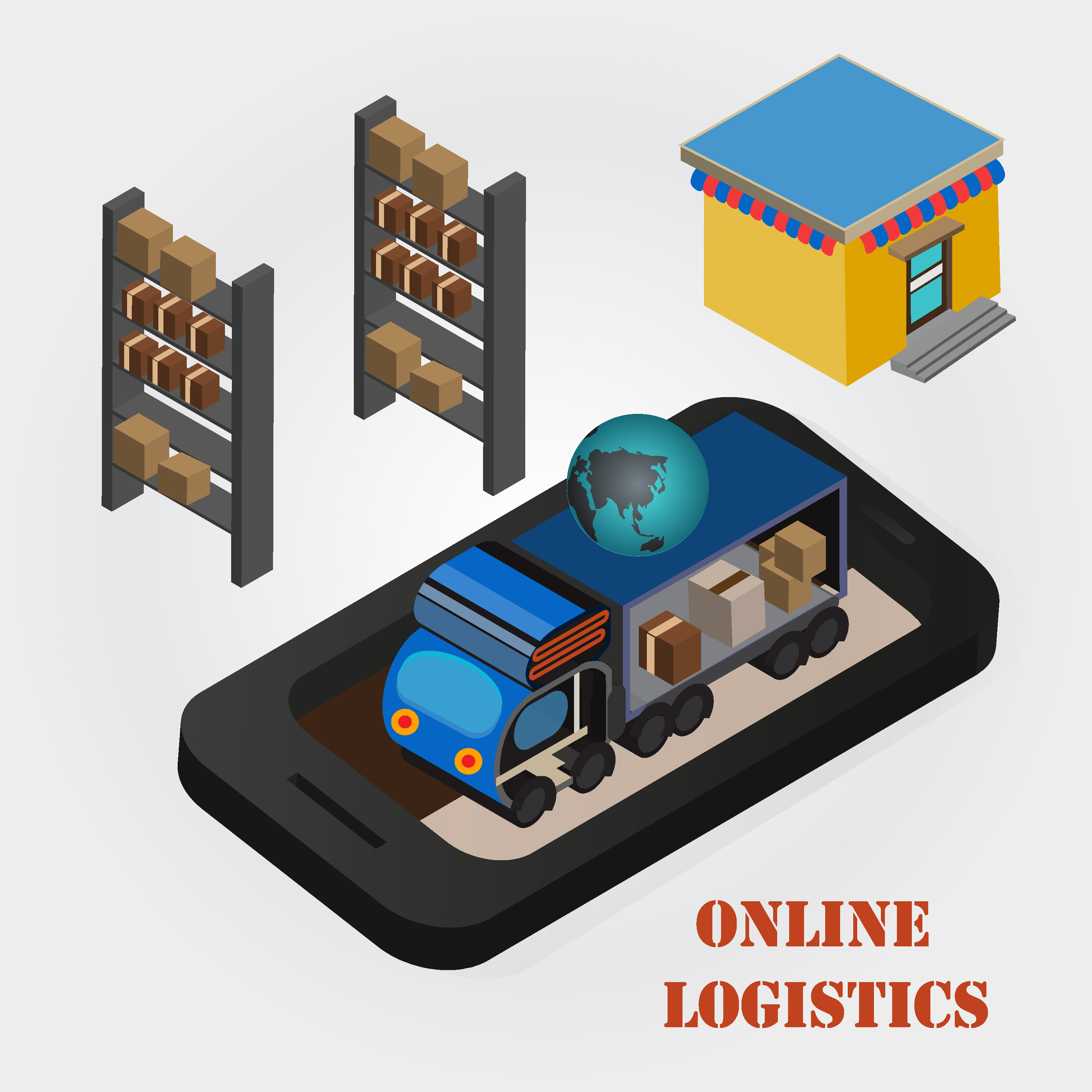
Staying away from detailed system specifications is not an excuse to ignore developing a list of clear and verifiable requirements. Make sure to include the specific business process the software has to support. In the case of the logistics industry, this could be anything from warehouse management to inventory control, from shipment tracking to invoicing, or anything else, including a combination of any number of processes.
Regardless of the initial specifications, the trick is to ensure the software is expandable, with the provision to support other key feature areas, which may be needed in future, especially as IoT is all poised to unleash a big disruption in the logistics space. There is also a need to ensure seamless integration and ability to pull in data from with diverse systems, considering the logistics ecosystem is now marked by strategic alliances and tie-up with different partners, each having their own software and systems. In fact, a single enterprise may run two or more systems, developed by different vendors, and sync or data integration from such other systems is a must in today’s age of big data.
These requirements translate to the vendor being competent not just in the technical front, but also adhere and comply with industry best practices and well-established quality standards.
3. Clarify Expectations on the Feature List

Drawing up the list of essential features the software should have is indispensable, but only part of the story. It is equally essential to define up front in a clear-cut manner, the other essentials. Requirements include anything related to the product offering and go beyond functional and nonfunctional system requirements. The following are some of the most common requirements which require clarity up front.
- The languages the system needs to support, and whether the interface should match the language preference of the users.
- The nature of the user base, as in the number of expected concurrent users, whether the software will supporting remotely dispersed users, whether the software will be accessed by external stakeholders such as channel partners and customers, and more.
- The nature of technology, as in whether the enterprise is willing to be an early adopter of promising yet untested technology, or wants to play it safe with legacy technology which may have some limitations.
- The extent of dependency, as in whether the enterprise prefers dependency with the new vendor or whether the enterprise would eventually want to manage and update the system in-house. In the latter case, it is best to use open-source software rather than proprietary software of the vendor.
- The nature and scope of regulations and standards to be co-opted into the system, mostly as validations and as reports.
- Nature and extent of essential software related services, such as deployment, validation, migration, training and general support, quality maturity level, and more.
- The extent of reconfigurability of the new system, which influences the speed of deployment. The speed of deployment may be just as important as the quality and scope of deployment. For instance, a cloud-based solution with minimum configuration could be up and running a matter of weeks whereas an on-premise deployment could take months.
It is not enough the software vendor has the technical capability to implement all these requirements. There has to be a cultural fit to ensure the vendor approaches the software development process in the way preferred by the enterprise. Success depends on the vendor being flexible in their approach, and communicating or collaborating with the enterprise in a proactive way. A DevOps approach may work best, though there are no one-size-fits all magic pill. Any agile approach which involves the business end users would work well.
4. Do Not Ignore Reporting Capabilities
Many enterprises and software vendors focus extensively on requirements gathering, and in the process ignore the equally critical part of reporting. Several enterprises also make the mistake of straight jacketing reports into a few handpicked options. Today’s dynamic businesses require dynamic reports, deeply integrated with analytical capabilities. One of the essential purposes of the software itself is to gather all relevant data, subject it to analytics, and deliver it to the relevant stakeholders or decision maker, in the form of actionable information, in the format of choice. A dynamic logistics management software would offer intuitive dashboard and live reports, to facilitate easy decision making.

For the successful deployment of logistics software, there is no shortcut or workaround than the vendor being competent in deploying the latest and the most versatile analytical tools and being able to roll out intuitive dashboards, mobile apps, and other front-end digital assets for the enterprise.
5. Undertake a Cost Benefit Analysis
As the saying goes, “if wishes were horses, there would be all cathedrals and no chapels.” The range of possibilities with software is endless, but success lies in prioritizing for the available budget. Not everything, no matter how utilitarian, productivity enhancing, or beneficial, will make sense from a financial point of view. It is very important to have a budget up front and sync the capabilities of the software to the budget. Also, the budget for software is not just the cost to get it developed and running, but also the cost to maintain it, and upgrade it from time to time.

A best practice for the enterprise is to weigh the requirements or functionality on a scale from “essential” to “nice to have” and “dispensable”, and evaluate the vendor in terms of the extent to which they can deliver on such functionality, and the range of functionality available within the available budget. Understand the basic offerings, and what exactly each specific add-ons will cost.
6. Do Not Ignore Support, Training, and Maintenance
The software is never static, more so in today’s dynamic business environment where the only constant is change. The extent of support required, and on offer vis-a-vis the requirements, is a crucial consideration in the vendor selection exercise.
Clarify expectations on the range of support, the documentation accompanying the software, and develop a blueprint on training users for the new system. The value of supporting documentation such as procedural templates, validation documents, and training materials can never be understated, though these considerations are rarely given much importance during the vendor selection exercise.

Many enterprises leave it at this stage, which is a cardinal mistake. Unless the enterprise is a startup with no legacy systems or business data, it becomes imperative to migrate some or all of the existing records to the new system. An action plan to enforce such migration, or sync the new system with the old is just as important as developing the new system. Many enterprises focus solely on the new system, oblivious to the migration issues, such as source and destination data format, and other issues. A sound technical partner offers comprehensive end-to-end support on all the apparently minor issues, but which have far reaching implications.
Last but not the least, sound partners would also be competent to roll out the software within the required deadline
Trying to develop state-of-the-art logistics software using the internal IT team is a disaster in the making, for the roles and focus of a support team and a development team is markedly different. The best option is indeed to tie up with a software vendor who doubles up as a strategic partner, for whom the software development process is the core competence and the sole focus. The mantra to success is, however, selecting for a fit, or making sure the software vendor ticks the bill for all the aspects above.
Stay up to date on what's new

Featured Blogs
Stay up to date on
what's new



Talk To Our Experts
In an increasingly real-time economy, the speed of services and timing are the prime factors for the logistics and supply chain industry. As per researchers, 76.9% of executives in the industry affirm that the shift towards a real-time economy has impacted their business strategies, structure, and processes. Here’s how Fingent helped a leading logistics and supply chain company enable new and productive business process automation.
A Prominent Logistics and Supply Chain Management Client
A leading third-party contract administrator for owner operators servicing in the transportation and logistics industry, who has partnered with critical providers, wanted to offer them access to vehicle rentals, background checks, and discount programs promptly and efficiently. They are specialized in a variety of segments like Settlement Processing, Personalized Customer Service, Logistics Management Technology, Owner Operator Programs, Fleet Data Visualization, Mobile Applications, Occupational Accident Coverage, Cargo Insurance, Cargo Insurance, and Customizable Enrollment Workflows.
The client handles over 11,000 contract drivers servicing 400+ clients in 46 states. They had a web portal through which drivers and clients could register, update, and manage vehicle-related and personal information. Limiting employees’ working options to desktops was indeed making their processes very unproductive and caused so much lag. Also, drivers were unable to update real-time information, or view important announcements from the company on the go.

A Mobility Shift for a Smarter Business
Today, amidst the accelerating technology evolutions and digitization, efficiency, speed, optimization, and timing have become critical aspects of a successful logistics business. It is mobility that allows logistics professionals to access important information or data, wherever they are, whenever they want. This enhances the productivity of workers, allowing them to do more work in lesser time, and thus be more efficient.

Fingent knew that it is enterprise mobility that will solve the challenges of improper and untimely communication channels and the inability to offer real-time information to the drivers in the company. We proposed to build a mobile application, that not only replicates their drivers’ web portal but also helps drivers to update personal and vehicle information on the go, check payment related details, know the benefits offered to them, view important announcements from the company, contact the company easily and do much more. Drivers can use their mobile device camera to scan and upload important documents (like driving licenses, truck permits, owner operator agreement, regional permits, insurance certificates etc.) into the database, track all their active vehicles, activate or deactivate vehicles in use etc.
The app was a significant investment to enable efficiency for their drivers in terms of better communication, real time information and increased visibility. The solution also helped to free up a lot of staff, improve accuracy, save the customer’s time and offer a greater deal of choice and flexibility.
The Impact of Fingent’s Enterprise Mobility Solution in their Logistics Business
The client noted the following impacts once the solution was deployed:
- Increased efficiency, throughput, and communication through process automation
- Real time information visibility leading to better asset utilization and work optimization
- Reduction in cost, effort and handling time for drivers
- Real-time proof of all active and inactive vehicles
- Increased accuracy of information exchanged between drivers and the company
- Improved vehicle utilization, order fulfillment, driver productivity, satisfaction and thus better customer satisfaction
- Increased Return on Investments.

In the current connected and globalized world, there are many people involved to get an object delivered from its manufactured place to its destination. There is always someone waiting for something, whether it be customers, logistics firms, distributors, retailers or any other part of the supply chain. The longer these parties must wait, the more they risk on resources, reputation, money etc. Logistics businesses, thus, must increase their speed, making use of every best technology, to strive and remain relevant in the industry.
Researches show that more than a quarter of logistics and supply chain businesses have still no digital strategy in place. As per Capgemini Consulting, most logistics companies today still operate on hybrid supply chain models, which combine both paper-based and IT supported processes. Papers and excels have always been a huge risk and challenge in optimizing any business. These are slow, only locally available, under the risk of damage and inefficient. Moving from hybrid supply chains to complete digitalization is the only key for a successful logistics business. A flexible, secure and easy to integrate platform for automating processes will surely work wonders for logistics and supply chain in terms of better efficiency, sales, and ROI.
Stay up to date on what's new

Featured Blogs
Stay up to date on
what's new



Talk To Our Experts
Logistics is of critical importance in today’s highly competitive world. The success of an enterprise largely depends on its internal efficiency and the extent to which it can delight its customers. A well-oiled supply chain and seamless logistics are essential to realizing both these objectives, and this by and largely depends on deploying the right logistics management software.
Good Logistics Software Solutions Gets the Basics Right
The basic function of any logistics management software is productivity and efficiency enhancement, in warehouse operations, aimed at saving money and improving customer satisfaction. A comprehensive suite covers everything from supply chain planning to control of inventory, and from the refining of warehouse functions such as picking, packing, slotting and shipping, to streamlining transportation routines, and much more. Side by side, it co-opts logistics tracking software to improve transparency and enforce greater control over operations.

Some of the basic features include:
- Multi-client architecture to support more than one customer
- Efficient costing and invoicing control functionality to process and apply service contract policies in real-time, to facilitate prompt invoicing
- Real-time inventory control and visibility, to nip issues in the bud
- Automated vendor-managed inventory management, to processes and record replenishment requests, aimed at speeding up the supply chain and minimize stock-out situations
- Logistics tracking software, which automatically sends and receive shipping data, to improve accuracy and offering unbridled transparency into cargo movements
- Comprehensive reporting capabilities, with key data such as inventory figures, product histories and shipment records are all accessible remotely at the swipe of a finger or the click of a button, and more.
Smart enterprises go in for inherently customizable and scalable solutions in software and data depositories. While this screams out “cloud,” not all cloud-based tools are equal. Smart players opt for packages or solutions with the right chain management architecture, rather than satisfying themselves with a simple multi-client deployment model.
Good Logistics Management Software Facilitates Seamless Integration
While there are several stand-alone and off-the-shelf software for essential functions related to logistics, today’s highly competitive and integrated business ecosystem requires either a single comprehensive suite covering all these activities or seamless integration between the various stand-alone suites.

The requirements of integration extend to the ecosystem. There would hardly be any enterprise handling the entire gamut of its logistics operations, end-to-end. Outsourcing is the norm, and striking strategic alliances with competent partners is an established industry best practice and a source of competitive advantage. Many enterprises partner with 3PL companies, who in turn work closely with mainstream parcel carriers such as FedEx and UPS. The smoother the interactions with such partners, the more productive the business.
The best logistics management software requires the capability to tap into the software of all these 3PL and other partners, draw critical information from it, subject it to analytics, and present it to the stakeholders in the form of actionable information.
For instance, seamless logistics requires smooth integration of the software managing warehouse operations and logistics tracking software to the ERP suite of the enterprise, enabling decision-makers and managers to sync and plan inventory and product movement between the warehouse and the store. State-of-the-art automated logistic management software automates such a function, scheduling warehoused dispatches in sync with the movement of the cargo through the supply chain, to avoid stock-out situations. Likewise, it may schedule a slowdown of production if the cargo is blocked at some point in the supply chain, to reduce inventory glut or warehouse over-capacity situations.

Success, however, depends on a caveat. Businesses would need to resolve the traditional aversion many businesses have, to share too much information with third-party providers, regardless of whether they are business partners in noncompeting businesses and part of the same supply chain or not.
Logistics Tracking Software Goes Beyond Offering Visibility to Aid Tactical Planning
The core of any logistics software is warehouse operations management. Likewise, logistics tracking software offers visibility and helps maintain control of the supply chain. Success depends on a well-integrated logistics software solution, integrating all these critical solutions, and deliverable to the right stakeholders in easy to use dashboards, preferably through mobile apps that facilitate anywhere, anytime access.

However, mere visibility is no longer enough in today’s hyper-competitive age. Visibility must be combined with insights on what to do next, and here Big Data analytics step in. Embedded analytics is much in demand among today’s successful logistics players.
As the business becomes more complex, the nature of the data also becomes more complex, necessitating the deployment of advanced analytical tools. The best analytics tool separates the wheat from the chaff, to pick out the relevant and timely information from the data corpus, subjects it to analytics, and presents it to the stakeholders in the form of actionable information. For instance, a consistent delay in shipment delivery over a period may be a signal to change the logistics route, or the logistics partner. An ordinary logistics tracking solution would make explicit the delay, but integration with the analytical solution would enrich the insight with possible solutions, such as quotes from other providers, alternative viable routes, or any other solution. Today’ system goes beyond ironing out chinks in the armor but also become a valuable tool in tactical planning.
Good Logistics Software Solutions do not Rock the Boat

Logistics providers would do themselves a favor by having clear-cut objectives when implementing their logistics management software. Legacy providers would do well to devise a system least disruptive to their existing operations, for otherwise they would be saddled with the additional headache of managing resistance to change, a situation underestimated by most enterprises. Always review each feature of functionality in terms of why it is needed, the benefits it brings to the table, and the issues or problems it would solve. Also, have a blueprint of how the new system of functionality will gel in with the logistics operations.
Several off-the-shelf software offers valuable add-ons, such as industry research and peer-to-peer events. Nothing prevents custom software developers to co-opt such features, but the keywords are relevance. The hallmark of a good software is not an extended bucket list of features or functionality, but the extent to which the relevant features are co-opted, and implemented in a non-obtrusive way to the smooth functioning of the enterprise.
Developing and deploying a robust logistics management software is well-nigh impossible in-house for logistics firms, as their core competence and focus are elsewhere. Implementing a brand-new logistics system isn’t a cheap affair either. To get maximum bang for the buck, logistics firms are better off roping in the services of a reliable and competent tech partner who has experience in delivering cutting edge solutions.
Stay up to date on what's new

Featured Blogs
Stay up to date on
what's new



Talk To Our Experts
The quest for improved productivity and efficiency in a highly competitive world has landed many enterprises at the altar of automation. A global survey by the Grant Thornton International Business Report reveals about 56% of firms are either automating processes or plan to do so over the next 12 months.
However, businesses caught up in the hype of emerging technologies seldom realize that for all the benefits of automation, it is a double-edged sword, which has the potential to inflict serious damage to the vitality of the enterprise.
Automation Improves Accuracy and Speed with Reduced Costs
Automation brings to the table a load of benefits, and among the most obvious and direct benefits are improved accuracy and speed, with reduced costs.
Manual processing of tasks is prone to errors, regardless of how dedicated the person entering the data, and how rigorous the cross-checks. Moreover, manual updating of records, data entry, or process is both time-consuming and resource intensive. What takes days of painstaking effort may be executed in a matter of seconds, by leveraging automated technologies.
Likewise, automated operations, with synchronized operations, and turning switches on and off at the right time, improves efficiency, eliminating wastage.Automated robots work 24×7 at factories, without taking a break, and automated agricultural operations increase crop yield, improving productivity and Returns on capital investment manifold.
Automation also brings in consistency to processes, and increase predictability. With automated system and processes, the outcome both in terms of time and results may be predicted with a high level of accuracy.
Automation enables implementing the seven lean principles of eliminating overproduction, reducing waiting, prompt transportation, avoiding unnecessary processing, eliminating unnecessary inventory, doing away with excess motion, and eradicating defects, with gusto.
Automation Improves Safety
Automation eliminates the risks associated with several hazardous jobs, from handling molten lead to operating shredders, and preempts employees from being infected with ergonomically related disorders through monotonous data entry, injuries due to lifting heavy weights, and so on.
Automation Offers Macro Level Benefits
Automation removes the kinks in the production and operations process, leading to a high level of efficiency and better products. At a macro level, such improved efficiency leads to reduced costs and lower prices which boost demand, both factors improving the now all-sacrosanct bottom-line.
A spin-off benefit is, gains to the environment. The highly efficient operation of heating and cooling systems, brought on by automation, reduce energy. Likewise, automated robots used in mining reduce waste and conserve the environment.
However, often overlooked are indirect benefits of automation, which may be just as profound. Automation spares employees from drudgery and allows them to focus on meaningful tasks. Such work enrichment plays no small part in giving employees a psychological boost and can contribute to employee retention in a big way.
Automation and the Job Loss Quandary
For all the benefits, automation poses certain challenges as well.
One of the biggest benefits and a major reason why companies opt for automation is to reduce their wage bills, which often constitutes a sizable chunk of their operations expenses, to the point of making operations unviable. In fact, it is the wage bill that sounded the death knell of many industries in the US and other developing economies, shifting business to China and other developing countries. Automation is widely seen as an effective tool for competitive advantage, to overcome the challenge posed by low-wage economies.

Automation does lead to a reduction in workforce and reduced wage bills. About 43% of businesses expect automation to lead to job losses. About one in every three companies in the manufacturing, technology, clean tech, and food & beverages sectors expect automation to replace at least 5% of their workforce.
However, enterprises salivating on the prospects of a substantial reduction in their wages bill, as automation takes over manual tasks, may have to hold on to their celebrations. Automation takes away manual tasks, but brings in additional complications, such as the need to monitor and maintain the automated system, with adherence to Quality Assurance (QA) process. In essence, it may replace several low-end jobs with a few high-end jobs. Only large enterprises can be assured of a reduced wage bill. For small and medium enterprises, automation reducing their wage bills depends on the scale and nature of operations, and in the worst-case scenario, automation may actually end up inflating the wages bill!
Automation induced job losses can cause macro-level disruptions as well. In Stephen Hawking’s words, automation can “decimate the middle-class jobs” and displace the working class. Apart from the remaining employees being psychologically unmotivated, such a trend can result in the enterprises finding it difficult to get talent, and having to spend more resources and effort than necessary of its human resource and strafing functions.
Automation May End up Being Costlier!
From a financial perspective, deploying automated systems requires significant capital investment. A situation may well arise when the cost to implement and maintain the automated systems exceeds the manual costs, making automation financially non-viable. There are also unpredictable costs related to maintenance, and repair, and also predictable but indirect costs related to supervision and training that make automation financially dangerous for an enterprise.
Also, automation depends on having a highly matured technology infrastructure as its backbone. Without reliable ultra-fast backbone and equally dedicated supply of energy, automation will fall flat on its face and become counter-productive. Many companies assume this as given, when the reality may be different, or at least much costlier than anticipated, even in first world economies.
Automation is Not Yet Compatible with Customization
A more significant challenge is the loss of versatility or flexibility. No machinery is as flexible as the human body, and no artificial intelligence can supplant the human brain. An employee can perform a flexible variety of tasks, whereas a machine is limited to what it has been programmed to do. Automation basically entails repeating the same process over and over again and requires standardization. One off customizations, to cater to any special situations or exigencies, or even approaching each customer in a special way, is an anathema to process or operational automation.
The latest developments in 3D printing may provide a breakthrough in applying automation in a customized way, but it is still early days, and there is a long way to go before viable models emerge and mature.
Unless automation is implemented without a thorough understanding of the business process, or customer preferences, it can make things pretty annoying for the customer. Consider the case of an automated customer service helpline, where the customer has to spend minutes selecting one option after another, and in the end, be cut off because he made a wrong choice somewhere and now cannot find the option he wants.
Also, automation works well in a perfect world, but in a practical world, where there may be a need for compromises, automated systems may fall flat on its face. For instance, a strike or a hold up may disrupt the supply chain, throwing the entire synchronized system in disarray.
Each wave of automation has come with fresh benefits. The first wave of automation, heralded by the Industrial Revolution of the 19th century and made production robust. The second wave of automation in the 20th century boosted production capabilities and speeded up things. The latest wave of digitally inspired automation, powered by IoT and related technologies, promises intelligent insights which have the capability to overcome, almost all these existing drawbacks or challenges.
The trick is to get the implementation right. It requires effective teamwork, bringing together all stakeholders. A partner who knows his trade is essential to develop cutting edge and seamless solutions that leverage the benefits of automation and customize it for the enterprise.
Stay up to date on what's new

Featured Blogs
Stay up to date on
what's new



Talk To Our Experts
As the adage goes, “it is a wild, wild world out there,” and nothing exemplifies it more than real estate. Real estate business offers rich and lucrative returns, but the scene is often chaotic. The absence of uniform standards, vastly different regulations and compliance requirement across geographies, highly fickle and disparate consumer requirements, all pose big challenges. Real estate firms face several pain points in coming at a correct amount for acquiring properties, identifying the apt rent amount, collecting the rent, effective management of properties, tracking maintenance, identifying long-term lease strategies, fixing agent commission, managing data, and in just about all gamuts of operations.
Many real estate companies take the easy route of ad-hocism, but such methods deliver only short-term and temporary gains and come with the cost of long-term pain.
Technology now offers viable solutions. Intuitive web applications and solutions help real estate companies remain in control of the highly fluid environment they work in and meet customer demands in a proactive way.
Related post: How technology helps Real Estate Companies improve profits
Ready Made Apps
Several ready-to-deploy apps in both the Google Play Store and AppStore, used by several property managers:
- Zillow is a popular free app for property search, offering several robust search filters and value added features such as mortgage calculators, access to “hidden” inventory, property estimates, and more.
- AppFolio, a marketing app, allowing property dealers to post ads to their own website and a number of other websites easily, rather than update all the websites and portals one-by-one. Other handy functionalities on offer include the ability to screen residents for credit eviction and criminal antecedents, check up on payment history provided by Experian RentBureau, the FICO credit score, and more.
- Rent Tracker allows property managers to enter tenants, contractors, buildings and even multiple owners. Tenants make rent payments and receive auto-generated email receipts, taking a load of the property’ manager’s back. PayByGroup goes a step further and allow property managers to organize and collect money from multiple tenants, and manage multiple tenets seamlessly. DIY Landlord likewise allows property managers to organize and manage property by unit, lease and tenant information. Follow-up and collecting rent in a timely manner is a big challenge and sucks up time and resources.The ideal mobile option offers various payment options such as debit card and credit card payment gateway, e-checks, and money transfer option, enabling tenants and buyers to make payments conveniently, without having to take a break from their busy life to do so. Such apps effectively manage hurdles such as delayed payment, conflict in payment, NSF and tax payments, cheque bounce issues, and a lot more, saving precious time.
- ReachOut Suite, a property inspection app, makes the task of conducting property inspections very easy and improves the productivity of inspectors manifold.
- ZipRealty offers an intuitive HomeScan feature, where a user simply holds up her iPhone to discover the homes for sale or recently sold in the vicinity, with the option to delve into further details such as asking price and photos.
While such readymade apps offer a host of useful functions, these are generic in nature, and may not suit the specific needs of the firm. In any case, the shortcut of using these apps come at the cost of loose integration of data, and the accompanying loss of efficiency, productivity, and accuracy, as data is duplicated, re-entered, and moved from one system to another.
Apps of Leading Realtors
Successful real estate firms see through the inefficiencies and roadblocks posed by disparate and half-baked systems and have invested in deploying native apps and other systems, customized for the exact needs of their stakeholders. Stakeholder centric responsive apps, for employees, agents, residents, owners, vendors, and others, provide the right data in a timely manner and automate routine processes. Such apps are almost always part of a comprehensive system.
- Leading realtors such as Weichert have deployed innovative customer facing apps, offering a gamut of functions such as social selling, taking prospects on a virtual tour of the property, and knowledge sharing, besides basic functions such as scheduling site visits and fixing appointments. In the backend, such customer-initiated activities become the basis for effective lead management.
- Keller Williams’ customer facing app likewise offers several handy functionalities, including a GPS map of the property locations, a listing of nearby schools and other utilities in the vicinity, photo galleries, mortgage calculators, ability to engage with an agent, and more.
- The Corcoran Group’s app leverages Google maps to shows sales and rental listings and also helps users find shops, restaurants, and other services near their current location. Such an Uber-like app works wonders for customers seeking rentals and purchase of a property. An intuitive drill down feature, offering further details such as price, lease terms, and other details accelerate the process, and may even lead to prospects closing the deal immediately.
- Voyager, Yardi’s property management solutions packs in a comprehensive range of functionality, centered on an integrated database. The solution integrates the accounting system, builds a lease renewal workflow with the ability to renew contracts, follow-up leads, manage maintenance work orders, generate comprehensive reports, and much more.
- Rentmoji, the all-in-one property management app handles every phase of the real estate business, right from property acquisition, vendor and work order management to maintenance and rent collection. It utilizes a SMART methodology platform, mapping out each vertical by automating property syndication, lead harvesting, resident screening, document storage, maintenance workflow management, vendor management, accounting and more.
- Coldwell Banker’s redesigned app is exemplary of the changing customer preferences. Buyers and sellers can post listings, and also share notes, photos, and videos, in a storytelling mode. The app also enables seamless engagement with agents, and a host of other features.
The Rationale for an Integrated Real Estate Solution
Managing all functions, from investment decisions to procurement, and from leasing to property management, from a single integrated system enables greater flexibility with good control. The executive, can, for instance, view trends as it unfolds and make necessary changes to the business process, without leaving the app. She could react to the announcement of a new project in a locality, with an immediate decision to purchase plots in the area, and execute the decision by deploying their agents in the locality, and simultaneously go on a promotional blitzkrieg, all without leaving the app.
The importance of big data analytics can never be emphasized in any business, more so in real estate, where several trends are at play, and there is a need to pamper the customer. An integrated app facilitates deep analytics. Millennials have both the budget and the inclination for home ownership. However, they are also technology independent, and real estate businesses have no option but to reach out to them with customized services, on an informed basis.
An integrated suite also plays into the need for cost consciousness. Success in today’s highly competitive environment, topped up by a recessionary climate, no longer depends only on increasing sales, but also requires extracting maximum possible efficiency from the deployed resources. Technology helps firms generate maximum value for money.
A major pain point for real estate companies is keeping track of maintenance requests, and managing maintenance. An integrated mobile app keeps property managers informed of the status of their properties, with real-time up-to-date data delivered at any time of the day or night, wherever they are. Such an ideal app would open a ticket for each request, notify the persons responsible for executing the tasks, notify key stakeholders of the status, all in real time. Property managers could track the completed works vis-à-vis the ideal timelines, and take remedial actions if required.
Real estate firms would do themselves a favor by developing custom software with the required features, and flexible enough to scale up and down as required. The double benefits of productivity and efficiency improvements, with improved customer satisfaction, is well worth the investment.
Stay up to date on what's new

Featured Blogs
Stay up to date on
what's new



Talk To Our Experts
Mobility is growing at an exponential pace and mobility apps are the flavor of the season. However, it is still important to get the development right, to reap the benefits of mobility. A crucial consideration, to be taken upfront, is whether to opt for native apps or web apps.
A Native App is developed specifically for a particular mobile device, customized for the operating system and other device configuration, and installed directly to the device, usually through app stores. At a basic level, there are separate native apps for Android devices and iPhones. A web app, on the other hand, is Internet-enabled app residing in the cloud, written in web code and accessible through the mobile device’s browser. Both native apps and web apps have its pros and cons. Web apps are similar to websites but more interactive.
Web Apps Surge in Popularity
Native mobile architecture is on its way out. Today, about 60% of the mobile architecture is mobile apps or hybrid, and just 26% of apps remain native.
The highly fragmented mobile space, coupled with the popularity of the BYOD environment where employees are free to use the device of their choice, make it commercially and practically unviable to develop native apps for each platform.
Native apps also lose out due to the need for velocity, so essential in today’s highly competitive environment. In most of the cases, the best time to roll out an app would be yesterday. Delays in rolling out the app may make the app obsolete, with competitors taking away the business. As such time to develop native apps for each platform is simply not available.
About 43% of companies now place movement as their top business capability, and they are still struggling to stay on par with the speed in which mobile technology advances.
Accessibility
Both web apps and native apps have its pros and cons, making trade-offs imperative.
On the face of it, web apps are accessible on any device, sparing the need for download onto the user’s mobile device. Such apps generally require internet connect to operate, though the latest web technologies such as IndexedDb, Web Storage, and AppCache deliver offline capabilities to web apps.
Functionality-Flexibility Trade-Off
Functionality wise, native apps, being optimized for the device, work faster and are more efficient, over web apps. A native app works as a standalone entity and remains totally compatible with the device’s hardware and native features, such as the accelerometer, camera and so on. Web apps, on the other hand, being generic, can usually access only a limited amount of a device’s native features. The biggest stumbling block is the difficulty of web apps to access the phone’s webcam, sensors, and some other hardware components. Web apps may also face difficulty in accessing the file system and local resources, but modern browsers adopt the File API, overcoming this big limitation. Generally, native apps are best suited for complex feature sets, whereas web apps are ideal when the requirement for native gestures is minimal.
While native apps, customized for the device, had a distinct superiority in the user interface, the gap has significantly narrowed in recent times, and there is very little difference in the user interface or usability between today’s web apps and native apps.
Moreover, where web apps compromise on functionality, it scores in flexibility. Web apps give developers unbridled freedom as the apps do not require approval from app stores, allowing release in any form and any type. Developers of native apps wanting to upload their app in app stores such as Google Play need to comply with the stipulations laid down by the respective app stores.
Robustness and Safety
Native apps, being leveraged to work seamlessly with the device’s built-in features, are efficient and faster. These apps also get the full support of the concerned app stores and marketplaces. Approval from the app marketplace denotes a high level of safety and security as well.
However, keeping native apps safe require the user to keep on updating the app at regular intervals, which is easier said than done. With web apps, the developer makes all the changes at the backend, without user intervention.
Development Approaches
The main difference between web apps and native apps is internal or in the development process.
Each mobile platform has unique features and unique set of platforms and requires compliance with its own unique development process. For instance, iOS uses Objective-C, Android uses Java, and Windows uses C++. Native apps have to comply with such requirements. Web apps, in contrast, are free of such customizations, with the developer free to use JavaScript, CSS3, HTML5, or any other Web application frameworks as per their desires.
However, there is a flip side to the story as well. Each mobile platform offers standardized SDK, development tools, and other user interface elements, using which developers may create native apps with considerable ease. Web apps do not get the convenience of such SDKs or tools, and the developer has to do the hard grind. This is changing of late, though, with the developer now having access to several tools and frameworks for creating web apps and deploying it to multiple mobile platforms and Web browsers.
Costs
Cost wise, developing a single web app that may be manipulated to suit any device is much more cost-effective that developing native apps for each device. Native apps also cost higher to maintain, considering the need to update many versions of the app.
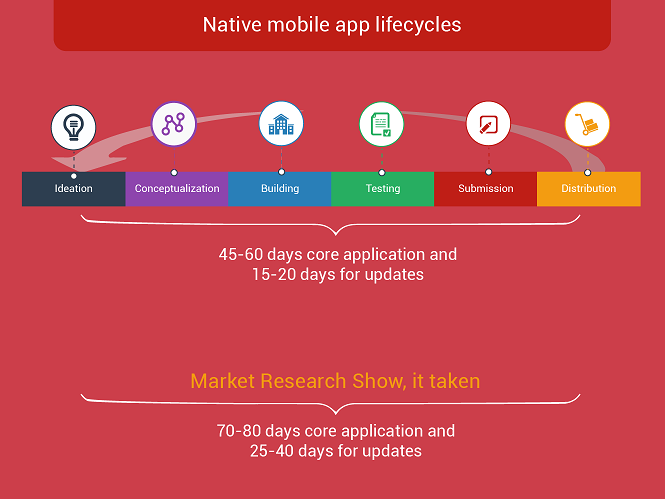
There is no definite answer on whether native apps or web apps are better. What works best depends on the circumstances. Consider the target audience who are likely to use the app, the required features and functionality, the hardware features required in the app, the timeline, and the budget to decide on whether to opt for web apps or native apps. Either way, it requires expertise to understand the exact requirement and take the crucial decision on whether to go native or web. We have the expertise to help you in this regard, the talent to roll out cutting-edge solutions highly customized to suit your requirements, and the experience to get it right the first time round.
Stay up to date on what's new

Featured Blogs
Stay up to date on
what's new



Talk To Our Experts
In today’s tech-neutral age, talent is the key differentiator between companies, with employees a key source of competitive advantage. Top app developers are in high demand to ride the mobility wave, and enterprises scramble to retain developers from being poached.
Developers are by and large content with their current jobs, but three out of four developers are open to new opportunities, and would readily change to a job that offers them better working conditions. Even developers not actively seeking out jobs do spend around an hour per week checking on potential jobs. This is in addition to the time they spend with other developers and potential recruits on communities such as Stack Overflow. In such a state of affairs, employers need to remain on their toes always, to retain developers.
Here are some tips to retain top talent in your enterprise, without allowing competitors to lure them away.
Provide Opportunities to Grow
Most programmers are knowledge workers who value their skills and strive to keep themselves updated. One in every three programmers contribute to open source projects, and a whopping 81% of developers program as a hobby as well. These programmers are neither beholden to any organization, nor dependent on any corporate training program for their skill enhancement. They remain with their organization as long as it is worth their while, and simply move elsewhere if the organization get in the way of their development. Their loyalty is to themselves first and to any organization second. Organizations would do well to understand this fact and provide employees opportunities to grow and develop their skills.
A good salary and fringe benefits are now a basic requirement, rather than any special motivators to ensure employees stay. Rather, if an employee feels the enterprise offers them opportunities to enhance their skill-set, valuable exposure, time to spend in creative pursuits, and more, they are more likely to stay.
Get the Leadership Right
Very often how the employee is treated in an enterprise determines whether he or she sticks on or leaves. As a rule of thumb, an authoritative leadership style is a sure-fire way to doom for the enterprise, and a servant leadership style, where the focus is to serve the employee, by facilitating them to do their thing, works wonders.
Having said this, a charismatic leader, who can lead from the front and motivate employees by dint of authority can also work wonders, no matter the leadership style. A good case in point is Steve Jobs, who would yell and publicly shame his teammates when dissatisfied with their work, and yet made Macintosh engineers believe they could achieve the impossible.
Keep Employees Motivated
The most effective retention trick is to facilitate the employee harness their creativity in tasks that matter to them. Abraham Maslow’s time-tested need-hierarchy theory lists out five levels of needs or motivation that satisfied an employee, starting from the basic psychological and safety needs, a moving on progressively to need for affiliation, esteem, and self-actualization. Most developers, by dint of being “knowledge workers”, have already accomplished their basic needs, and look primarily at higher level needs such as esteem and self-actualisation.
The onus is on the enterprise, especially HR to craft retention strategies, keeping in mind what exactly motivates an employee, and would prompt them to stay. Challenging work assignments, rewarding projects that would enable them to gain the esteem of their co-workers and peers, a sense of satisfaction on having accomplished a project that is really useful, and more are some ways to retain the employee’s interest to stay.
Pamper the employee
Motivating the employee into staying is of no use unless the basic systems are in place. Developers being highly skilled “knowledge workers.” The onus is on the enterprise to facilitate a congenial working atmosphere to do their thing.
Facilitating the employee means pampering to their needs, and a flex-and-fun time, combined with work-from-home options lead the list of facilities sought after by most developers. About 64% of developers already work remotely at least one day each month, and 11% of developers work remotely on a full-time basis, as of now. Nevertheless, much more is required to keep developers happy, and facilitate their creativity. While 57% of developers valued the ability to work from home on vacation days most, 53% of employees valued vacation days, 47% of employees valued health benefits, 40% of employees valued work hours, and 40% of employees valued the equipment they use.
Autonomy and Career path
At times, retention of talent may have more to do with a dysfunctional enterprise than any other factor. A rigid and hierarchical enterprise, with a culture of deferring to authority, and where information is kept on a tight light is hardly congenial for developers, who value creativity and openness. Most talents seek to leave enterprises where talent and merit are not valued, where promotions are a matter of tenure and not merit, and where there are no mentors to guide them.
Programmers value autonomy and empowerment. Empowering them to take crucial decisions regarding their projects, entrusting them to engage with clients directly, drawing deadlines through a collaborative process rather than imposing one from the top, are all steps that make employees feel valued, appeal to their self-esteem, and go a long way in retaining them for the enterprise.
Also, enterprises that fail to chalk out a clear career path for their top talent risk them leaving. Not all developers make competent managers, and many of them do not even seek a managerial position. The onus is on enterprises to ensure progress in roles and responsibilities that suit them. A technical path, parallel to a managerial or supervisory role, may work best for technocrats who may not find managing people their cup of tea.
Top programmers seek continuous value. They seek out highly challenging projects and seek to leave when they perceive the projects they work on are futile or destined to failure.
Getting and retaining top app developers is not easy. However, we offer an effective alternative. We already have a team of highly talented, resourceful, and experienced app developers, with a track record of having delivered several intuitive mobility and other projects, for customers cutting across industries. When you hire us, you are free of all your human resources related worries. Retaining the top talent, pampering them, and preventing others from poaching the best talent becomes our headache, leaving you free to focus on your business.
Stay up to date on what's new

Featured Blogs
Stay up to date on
what's new





















